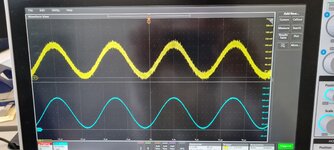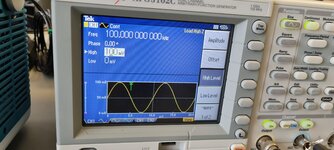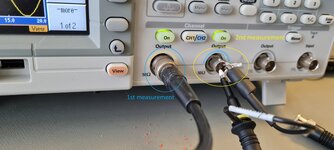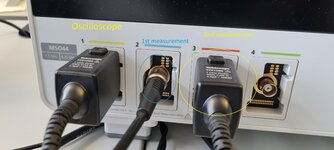blackite
Newbie level 4
I have a doubt whcih is very fundamental. i wanted to generate a 100mv sinus signal from a signal generator and measure it on an oscilloscope. Actually to do this i attached a two sided BNC cable. The frequency was 100Khz.
1) First measurement- One side to signal generator and the other side to oscilloscope.
2) A second measurements i did was used one of the oscilloscope probe and directly attached the probe to BNC input port in the signal generator. Please see the picture attached to this thread.
As shown in picture the the oscilloscope signal - blue signal is from the first measurement BNC to BNC and the second measurement is the yellow signal. My question why are there distortions in the second measurement. I assume they are reflections whne i measure directly form the probe and in 2nd measurement the oscilloscope is filtering? But according to my knowledge the oscilloscope should show me the complete bandwidth also when a bnc cable is attached. I want to understand what exactly the oscilloscope is doing here because i want to use the sine wave generated form the SG for one of my projects.
1) First measurement- One side to signal generator and the other side to oscilloscope.
2) A second measurements i did was used one of the oscilloscope probe and directly attached the probe to BNC input port in the signal generator. Please see the picture attached to this thread.
As shown in picture the the oscilloscope signal - blue signal is from the first measurement BNC to BNC and the second measurement is the yellow signal. My question why are there distortions in the second measurement. I assume they are reflections whne i measure directly form the probe and in 2nd measurement the oscilloscope is filtering? But according to my knowledge the oscilloscope should show me the complete bandwidth also when a bnc cable is attached. I want to understand what exactly the oscilloscope is doing here because i want to use the sine wave generated form the SG for one of my projects.



